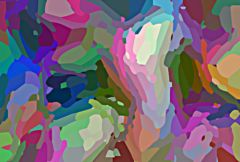S_TextureNoisePaint
Creates an abstract texture by applying an AutoPaint effect to a procedurally generated noise texture.In the Sapphire Render effects submenu.
Inputs:
- Background: The current layer. The clip to combine the texture image with. This may be ignored if the Combine option is set to Texture Only.

|